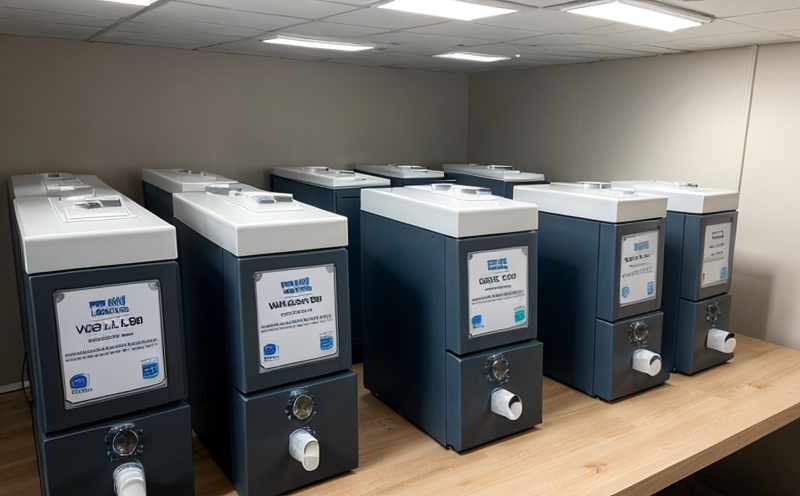ISO 16000-10 VOC emissions Small chamber procedure
The ISO 16000-10 standard specifies a small chamber method for the determination of volatile organic compounds (VOCs) in indoor air. This procedure is widely used by textile manufacturers, quality managers, compliance officers, and R&D engineers to ensure that products meet stringent emission limits set forth by international standards.
The ISO 16000-10 method involves placing specimens of textiles into a small chamber under controlled conditions. The chamber allows for the measurement of VOC emissions from the specimen over time. The test is designed to simulate real-world exposure scenarios, providing a reliable and consistent means of measuring emissions.
The testing process begins with careful preparation of the specimen. This includes cutting samples that are representative of the fabric's composition and size. Once prepared, these specimens are placed into a small chamber where they are exposed to controlled environmental conditions. The chamber is then sealed, and VOCs emitted from the materials are captured for analysis.
The test requires precise control over temperature, humidity, and air flow to ensure accurate measurement of VOC emissions. This controlled environment simulates the typical indoor conditions under which textiles may be used, ensuring that the results reflect real-world performance. After a specified exposure period, the chamber is opened, and VOCs are collected using a gas chromatograph.
The analysis of the collected samples involves identifying and quantifying various VOC compounds present in the air within the chamber. This process typically requires specialized instrumentation capable of detecting trace amounts of chemicals. The results provide detailed information on the types and concentrations of VOCs emitted by the textiles under test.
Understanding these emissions is crucial for manufacturers who wish to comply with environmental regulations and improve product quality. By identifying problematic materials early in the development process, companies can make necessary adjustments to formulations or manufacturing processes, thereby reducing harmful emissions before products reach market.
Testing according to ISO 16000-10 helps organizations demonstrate their commitment to sustainability and health by ensuring that they are meeting relevant standards. It also aids in identifying potential improvements in product design or raw material selection, which can lead to reduced environmental impact and enhanced customer satisfaction.
Applied Standards
- ISO 16000-10: Specifies a small chamber method for the determination of volatile organic compounds (VOCs) in indoor air.
- EN 452-1: Sets out procedures for measuring formaldehyde emissions from textiles by dynamic headspace sampling.
The ISO 16000 series of standards provides a comprehensive framework for evaluating the emission characteristics of materials used in indoor environments. These standards are designed to help manufacturers and other stakeholders ensure that their products meet stringent environmental requirements while maintaining high levels of quality and performance.
Specifically, ISO 16000-10 focuses on the measurement of VOCs, which can have significant impacts on human health when present at elevated concentrations. By adhering to this standard, companies can gain valuable insights into how their products contribute to indoor air quality and take steps towards minimizing any adverse effects.
Compliance with these international standards not only ensures that your organization meets regulatory expectations but also enhances its reputation among consumers who value eco-friendly practices. It demonstrates a proactive approach to sustainability, which is increasingly important in today's market place.
Eurolab Advantages
- Accurate Results: Utilizing state-of-the-art equipment and experienced personnel ensures precise measurement of VOC emissions from textiles.
- Comprehensive Support: Our team offers guidance throughout the testing process, helping clients understand their results and implement necessary changes accordingly.
At Eurolab, we pride ourselves on delivering accurate, reliable test results that provide actionable insights for our clients. With years of experience in this field, our experts are well-equipped to handle even the most challenging samples. Our commitment to excellence extends beyond just performing tests; it includes offering valuable advice based on our findings.
Our comprehensive support services go far beyond simple testing. Whether you need assistance interpreting your results or require help implementing corrective measures, we're here to assist every step of the way. By leveraging Eurolab's expertise and resources, organizations can achieve better outcomes faster and more effectively than they could on their own.
Choose Eurolab for your ISO 16000-10 VOC emissions testing needs. Let us help you ensure compliance with international standards while optimizing product performance and enhancing overall sustainability efforts.





